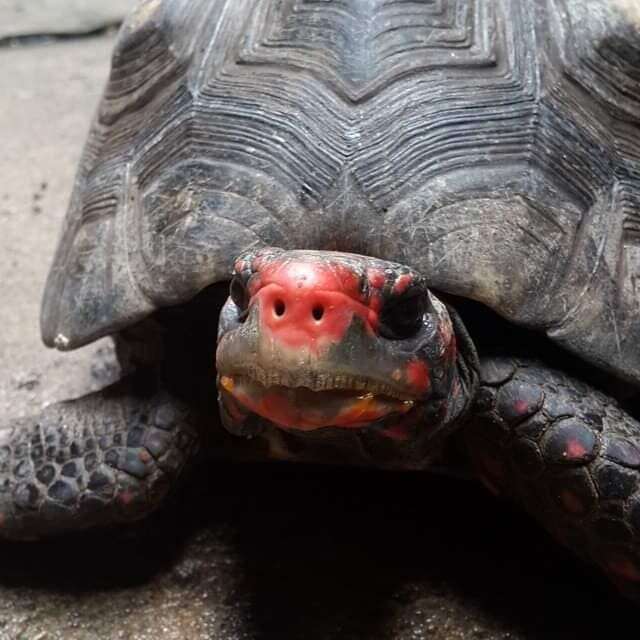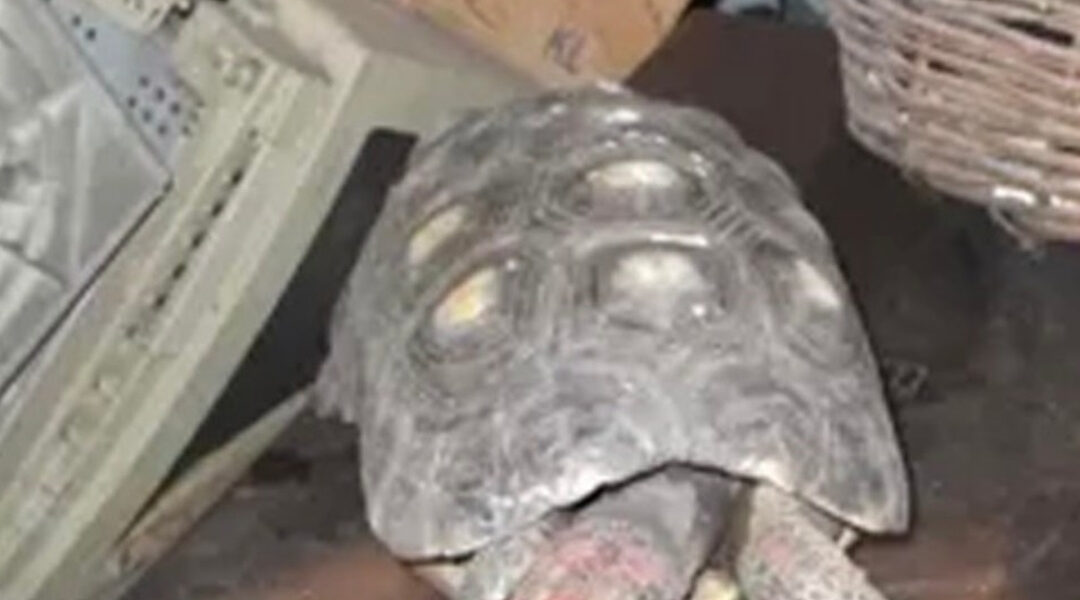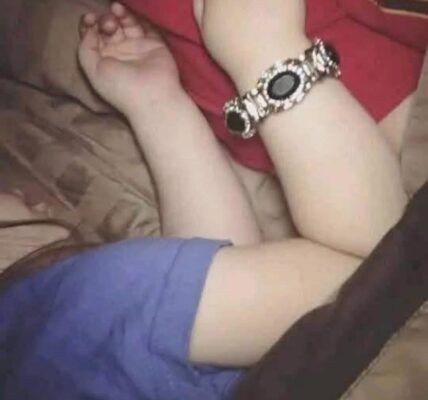
For as long as she could remember, Nathalye De Almeida had heard her mother’s stories about a little tortoise named Manuela. In the early 1980s, when her mom was a child, Manuela had been her constant companion—a beloved pet who followed her around the yard and filled her young days with joy. But every story her mother told was shadowed by sadness.
One day in 1982, when Nathalye’s mom was just eight years old, Manuela disappeared. The family searched the yard and the neighborhood, but the tortoise was nowhere to be found. Heartbroken, they assumed he had wandered away forever. Her mother grew up carrying the quiet ache of that loss, always remembering the pet she loved but believing he was gone.

Decades passed. Then, in 2013, a moment arrived that no one could have imagined.
Nathalye’s grandfather had just passed away, and the family gathered at her mother’s childhood home to sort through the belongings he had left behind. His attic was notoriously cluttered, filled with decades of boxes, tools, and forgotten odds and ends. As they cleared it out, moving items one by one, someone opened up the hollow frame of an old wooden speaker.
Inside, nestled among the dust and shadows, was something alive. A tortoise.
“We were shocked!” Nathalye recalled. “My mom arrived crying because she didn’t believe it. They found Manuela!”
It seemed impossible, but it was true. After thirty years of absence, the family’s long-lost tortoise had been there all along—living quietly in the attic. Somehow, against all odds, Manuela had survived. The family suspects he lived off termite larvae and whatever else he could find in the cluttered space. His resilience stunned them.

After three decades, the little tortoise was alive and well.
The reunion was emotional. Nathalye’s mother wept at the sight of her childhood companion, the pet she thought she had lost forever. And as the shock faded, joy replaced it. Manuela had returned to the family—not by walking back home from afar, but by being discovered in the most unlikely of places.
Nearly 10 years have passed since that miraculous discovery. Now known as Manuel—after the family learned the tortoise was male—he lives happily with Nathalye, who cares for him with the same affection her mother once did.
“Manuel is doing great,” Nathalye said. “He’s grown a lot. I brought him in to live with me because I have a lot of affection for him.”
Her mother visits often, unable to stay away from the pet who represents so many memories of her childhood. She feeds him, pets him, and kisses his shell with the tenderness of someone who never stopped loving him, even in his long absence.
“He’s part of our family,” Nathalye said. “He is one of us.”
Some stories sound too incredible to be true, and yet they are. Manuel’s survival is still a mystery—how exactly he endured those long, dark years will never be fully understood. But in the end, what matters most is not how he survived, but what his return meant.
For Nathalye’s mother, the little tortoise never truly disappeared from her heart. And now, after decades apart, she can hold him again, proof that sometimes the things we lose have a way of finding their way back to us.




